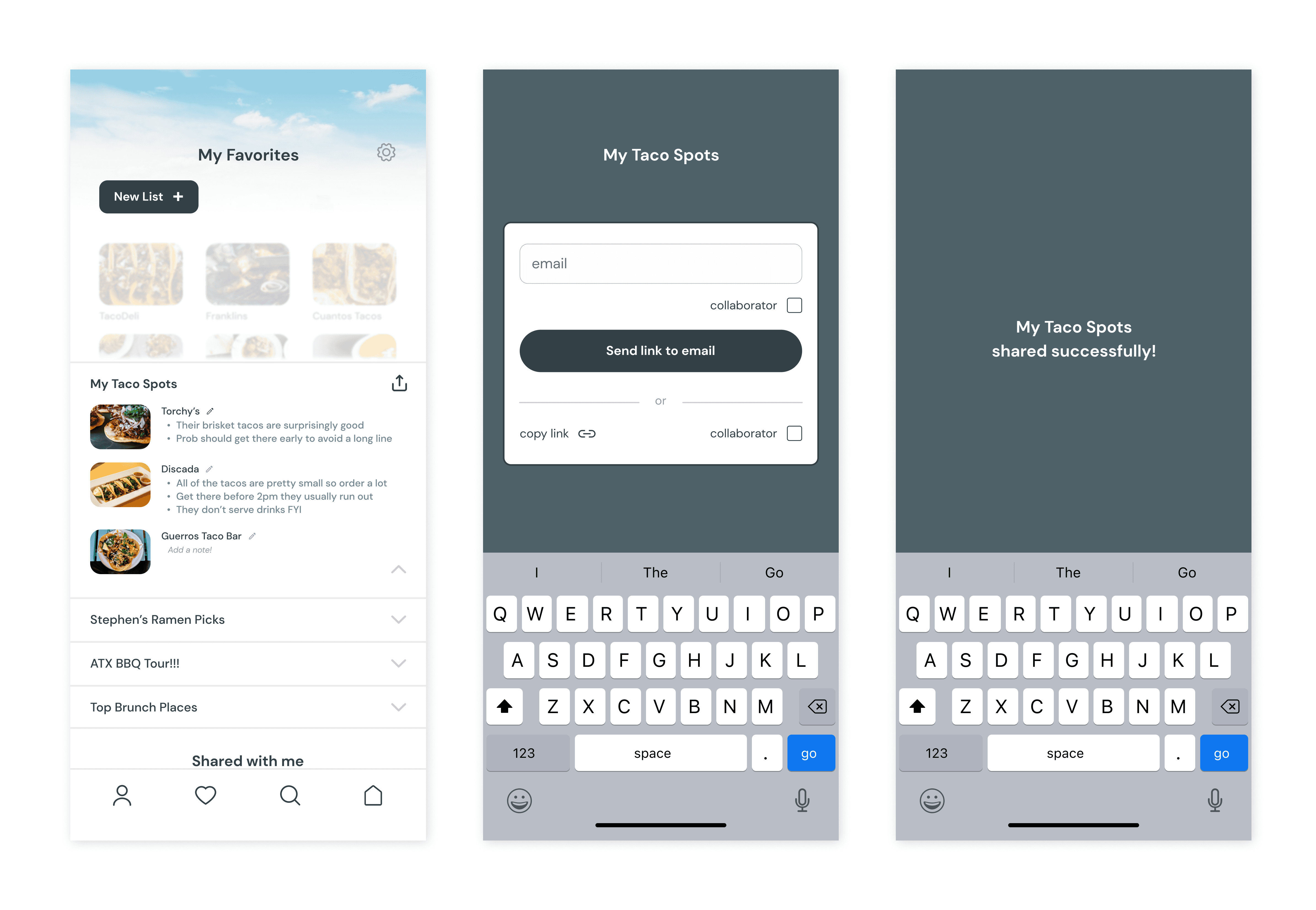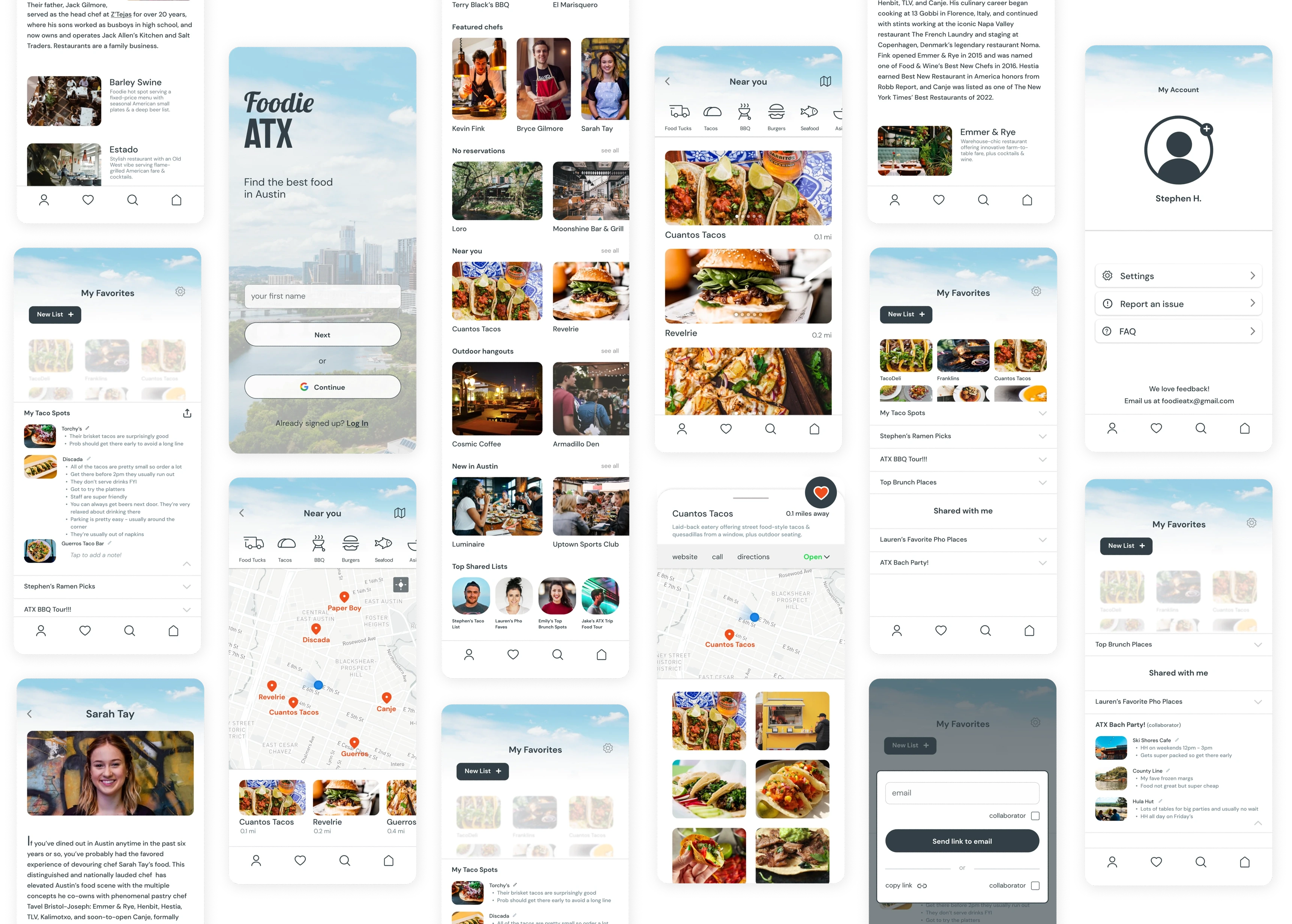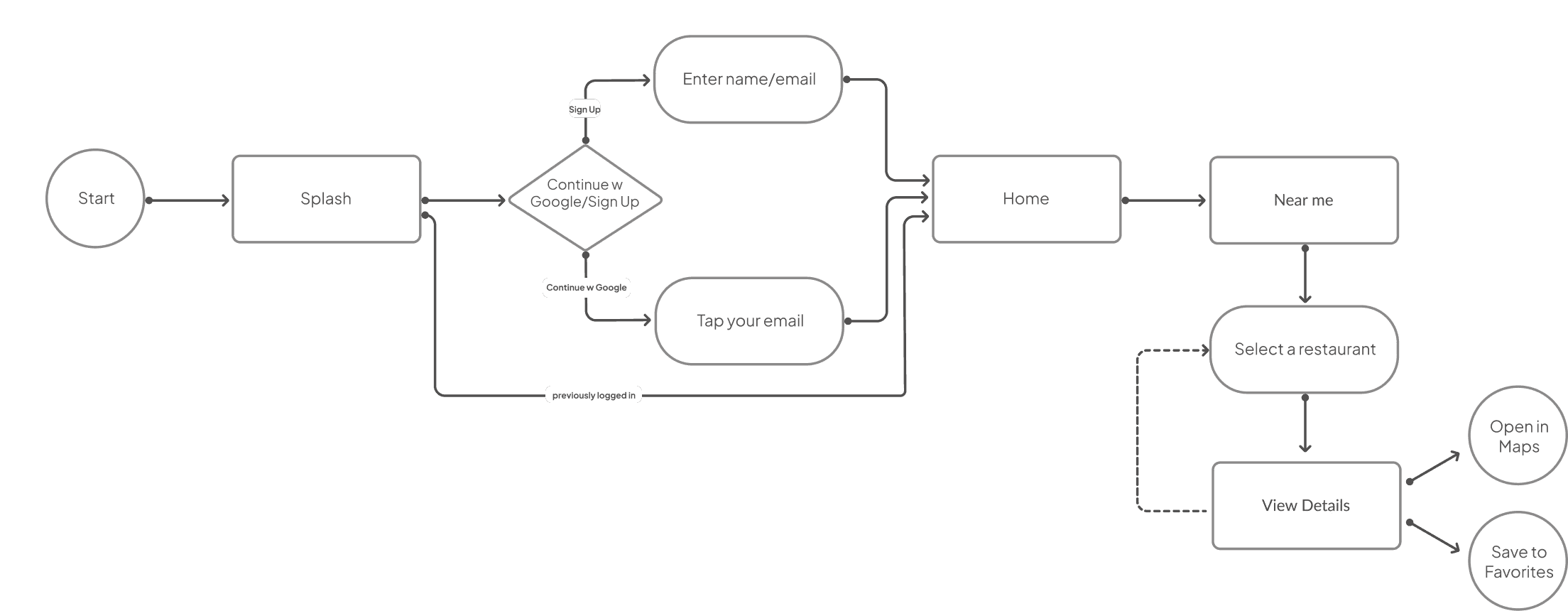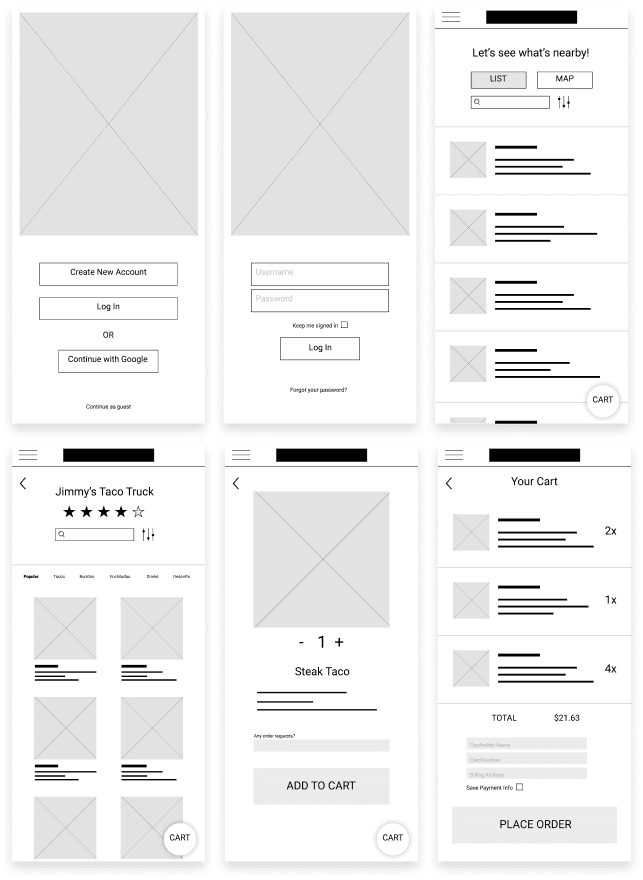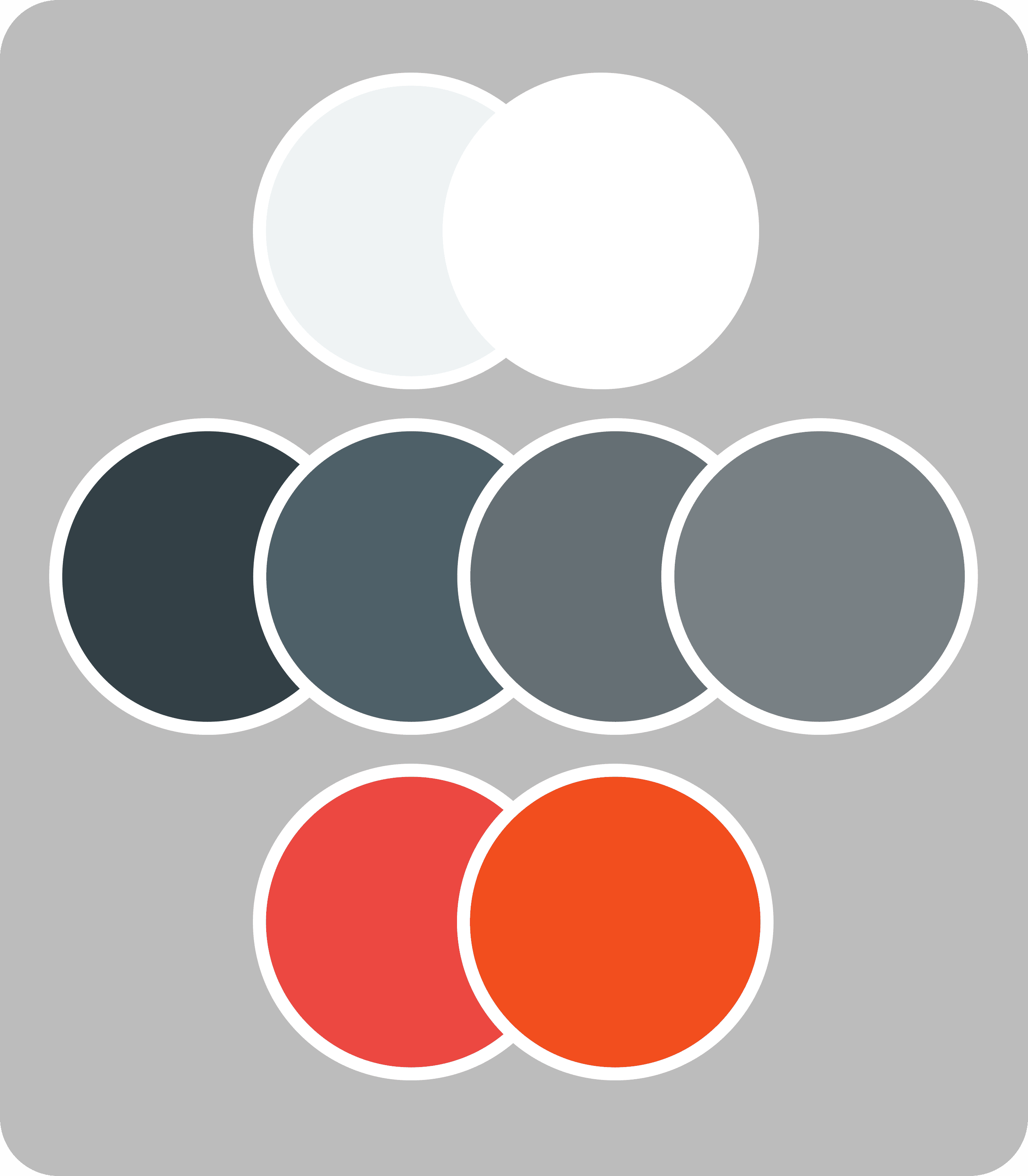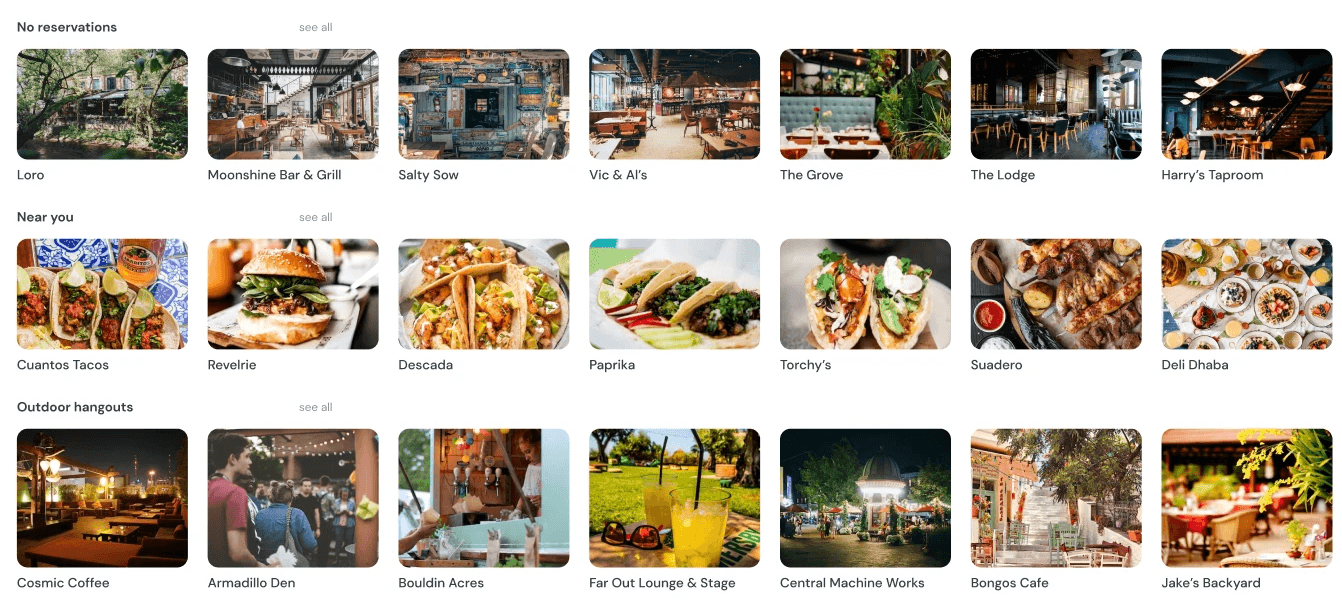Foodie ATX
Find the best food in Austin.
Programs used
Figma, Protopie
Timeline
Summer 2023
Role
Designer, Researcher, Prototyper
Austin’s food scene is booming, with new restaurants constantly opening and social media influencers showcasing the latest dining spots. However, discovering and keeping track of great restaurants isn’t as easy as it seems.
• Google and Yelp reviews are unreliable, with most places rated 4.5 stars or higher, making it difficult to differentiate truly great spots.
• Social media is cluttered—while food influencers highlight exciting places, users can only save entire posts, not specific restaurants, leading to disorganized lists that get lost in a sea of saved content.
• There’s no easy way to track personal favorites or get curated recommendations tailored specifically to Austin’s food scene.
Design a food discovery app that provides a more curated, local-first approach to restaurant recommendations.
• Favorites Feature: Users can create custom lists, add notes, share recommendations, and collaborate with friends.
• Curated & Trending Dining Options: A more reliable way to explore top spots in Austin, with recommendations based on location and popularity.
• Chef Profiles: A dedicated section to highlight local chefs, their culinary backgrounds, and the restaurants they’re affiliated with—adding credibility to recommendations.
Research
Method 1: Survey - 100 Respondents, Austin Residents & Frequent Diners
Key Insights:
82% of respondents reported that they have been to restaurants with high Google ratings but found it to be disappointing.
67% said they rely on word-of-mouth recommendations over online reviews due to trust issues.
74% expressed interest in a more localized, curated approach to restaurant recommendations.
45% said they often struggle to decide where to eat due to an overwhelming number of options.
Method 2: User Interviews - 5 Participants, Mix of Foodies & Casual Diners
Common Pain Points:
Review Fatigue: “Everything is 4.5 stars—it’s hard to tell what’s actually good.”
Trust Issues: “I don’t trust Google reviews because they feel inflated or fake.”
Lack of Local Perspective: “I’d rather get recommendations from locals who actually know the food scene.”
Flow Diagram
To outline all the necessary functionality, I created a flow diagram of one of the main tasks a user can complete. Below is the flow for a user finding, saving, and getting directions for a restaurant near them.
Once the flow diagram was established, I started creating the low fidelity wireframes.
These wireframes are from my original design which included an ordering feature. This evolved after conducting user research to focus primarily on the favorite feature.
High-Fidelity Design
Color Palette
The use of images led me to decide to keep the color palette relatively simple.
8pt Grid System
I chose the 8pt grid system because this helps to create visual stability and order, making it easier for users to understand the layout and navigate the design.
Carousels vs Accordions
I explored accordion menus but given that images are paramount when it comes to food, I decided to use carousels for the home page.
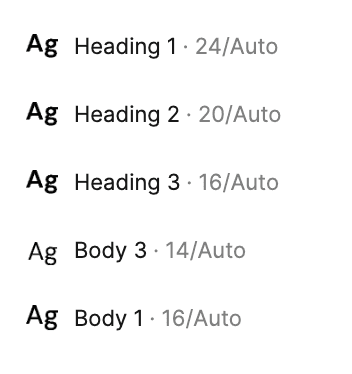
Typeface
I chose DM Sans to promote legibility, communicate tone, and sentiment of the brand.
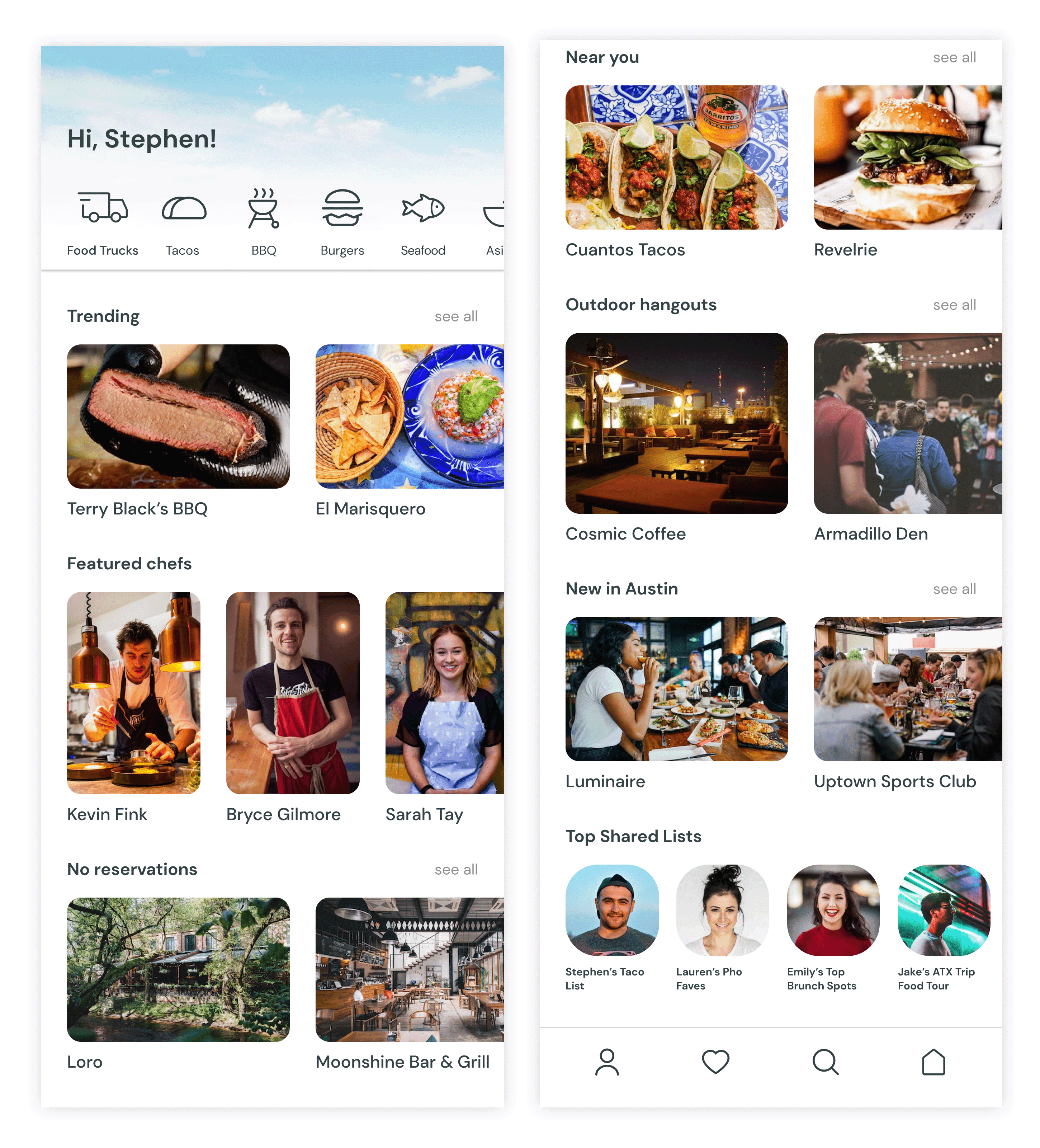
Home Screen
I focused on a minimal home screen with lots of carousels to help cut down on clutter and keep the design simple while utilizing plenty of whitespace.
List Screen
I added a carousel for the images on the Near You page so that users could view additional images without having to leave this page.
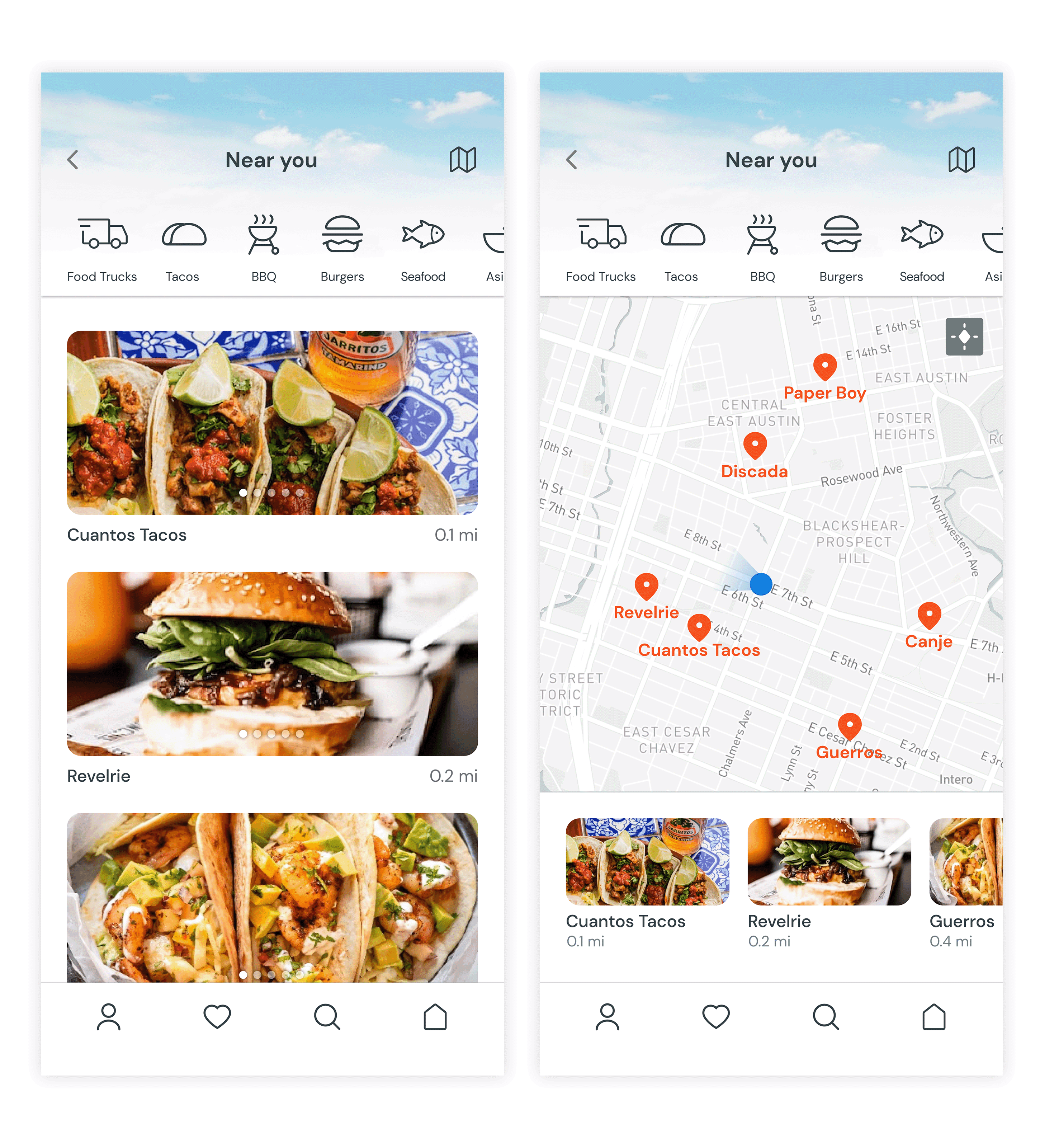
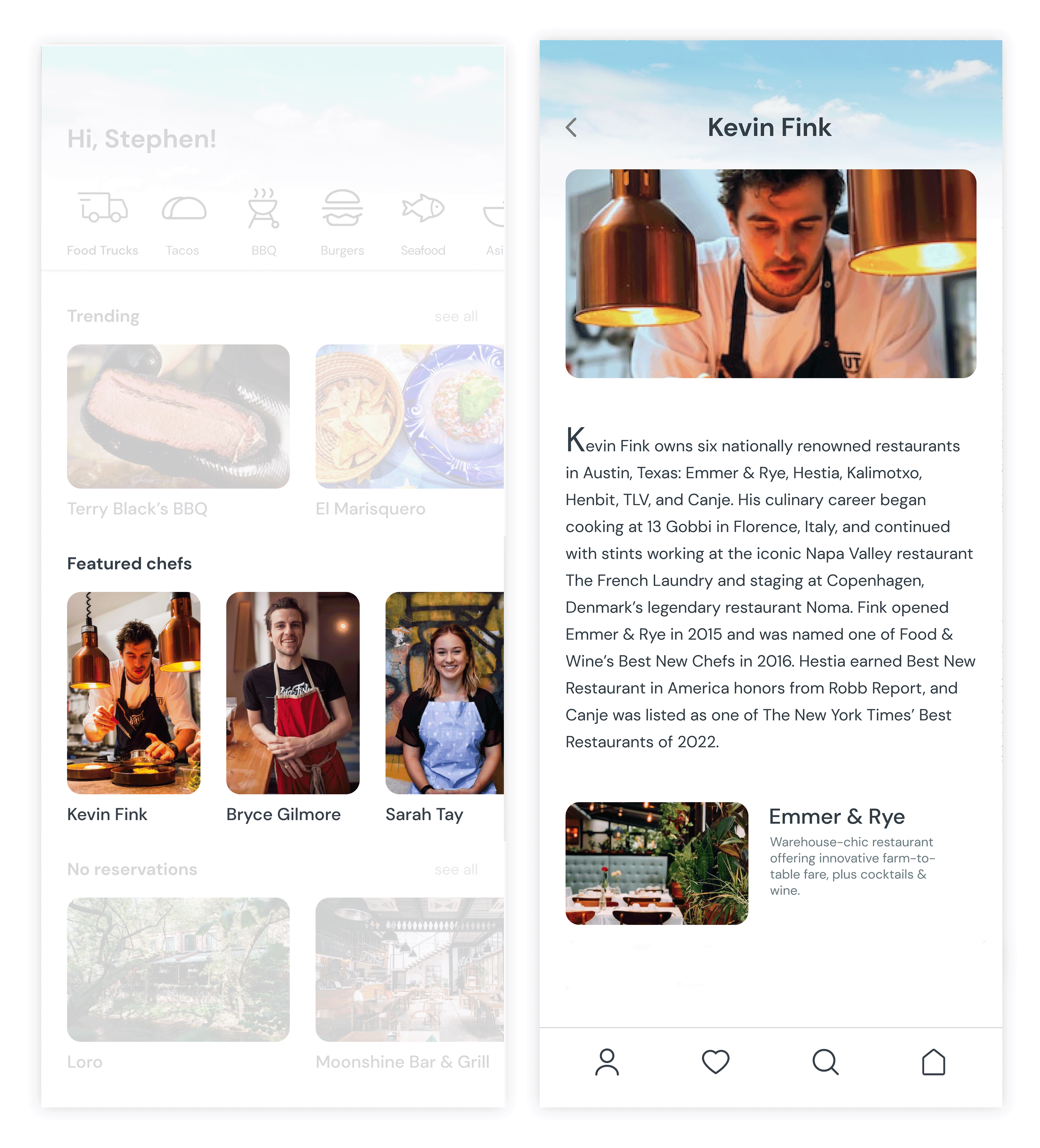
Chefs
Having a section for information on chefs is what helps differentiate Foodie ATX from other apps that only display restaurants or articles.
Favorites Feature
The favorites feature was added after conducting user research. This quickly became the cornerstone feature of Foodie ATX. I expanded further when I decided to allow users to create lists within their favorites. Users can then share their lists and also add collaborators to lists. This is also meant to help organically grow users.
I learned so much about the dev process when building this feature. In working with developers, I gained knowledge about the intricacies of this process as well as the importance of deep linking.
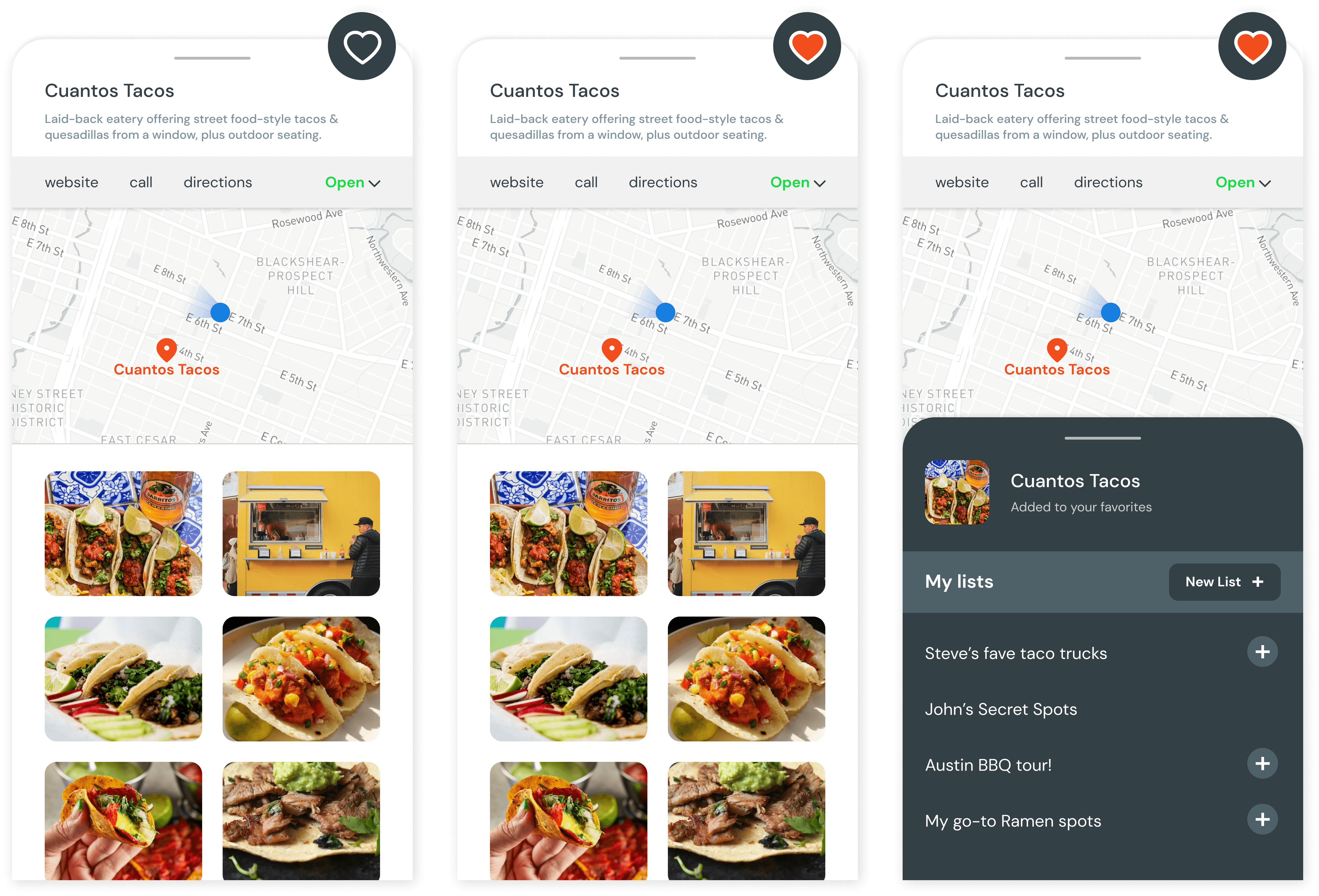
I first used a bookmark icon but decided on a heart because that evokes more of an emotion than a bookmark. Although users can create lists on their favorites page, I decided to add a shortcut to that process as well.
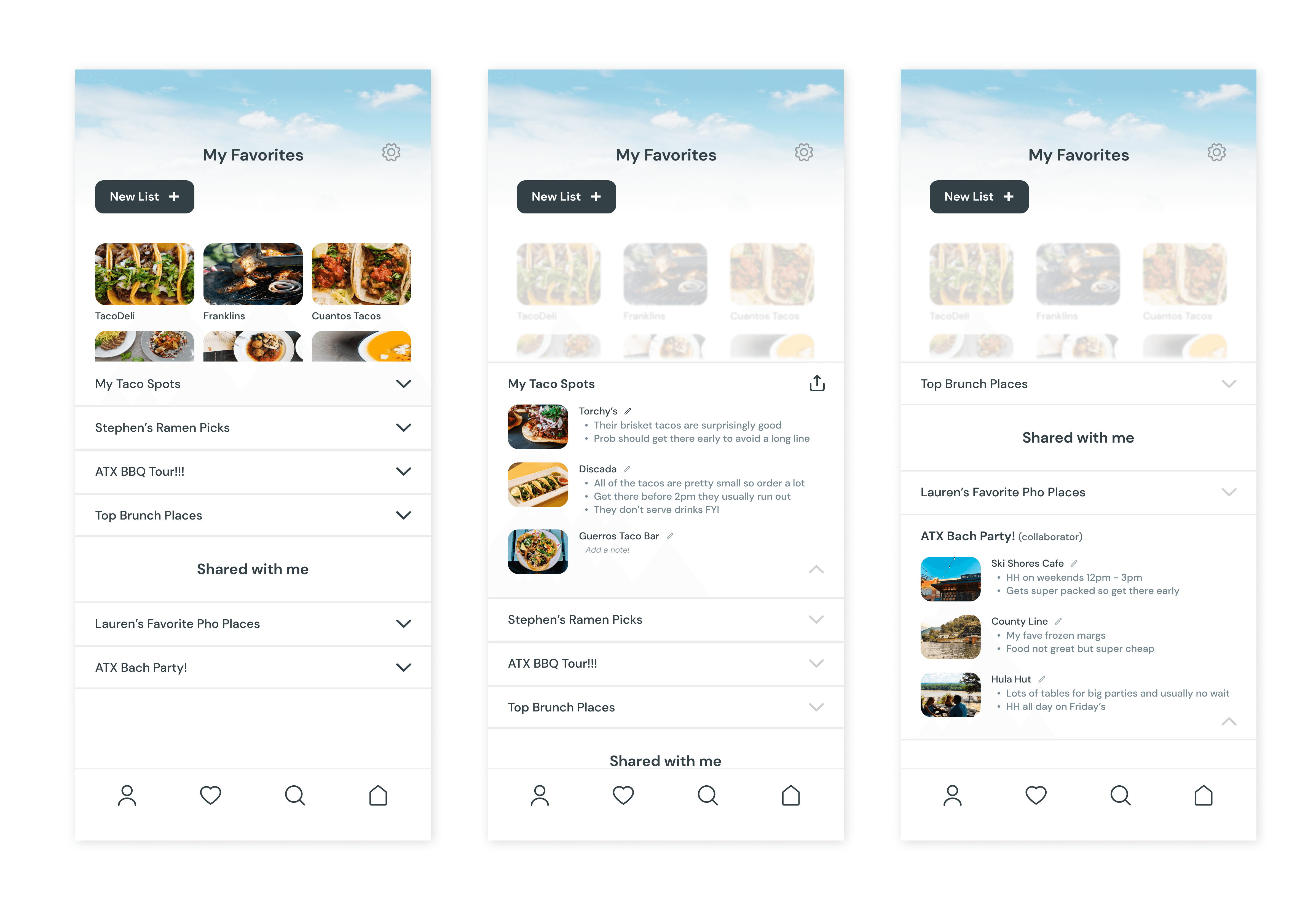
Although I chose carousels for the home screen, accordion menus made more sense for the favorites page. If users don't immediately add something to a folder, it appears in the upper section. Users can long-press one of those unlisted restaurants to drag-and-drop it into a current list if they choose not to create a new one.
